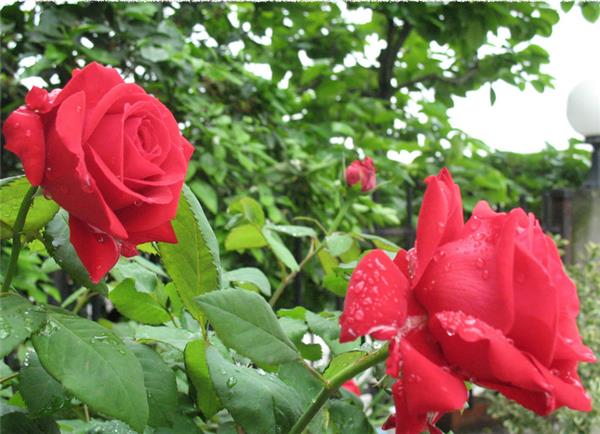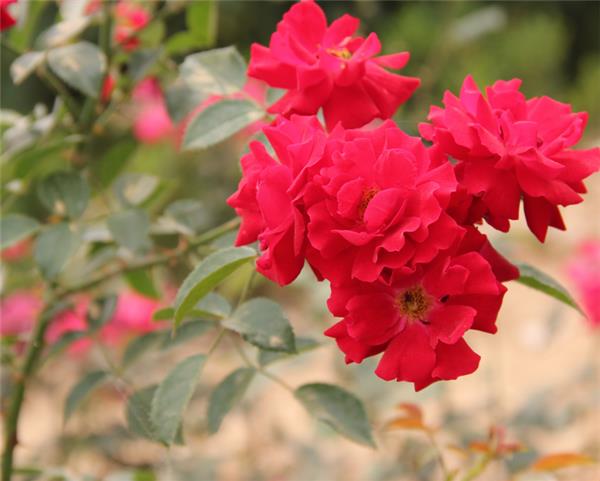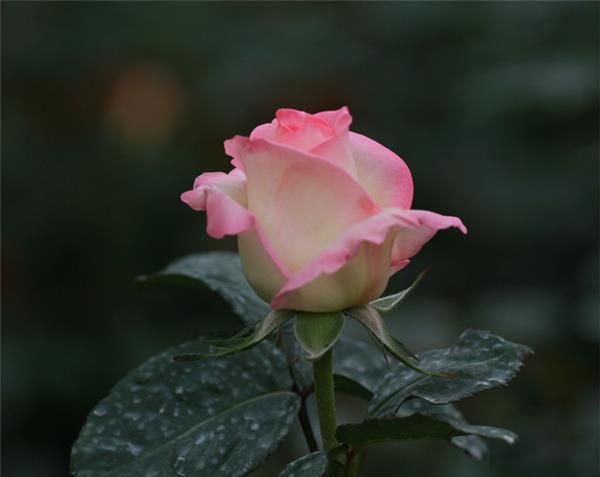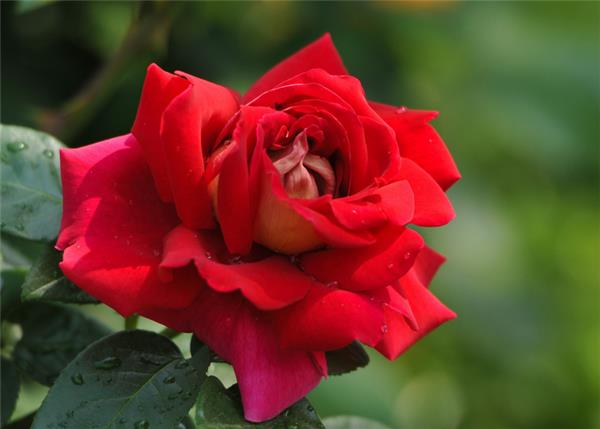Interpretation of cultivation techniques of Chinese rose
Known as the queen of the rose, the four seasons bloom for a long time, and the fragrant color has a good greening and beautification effect, the following introduces the cultivation techniques of next month's rose.

Cultivation techniques of Chinese rose
Reproduction: most of them adopt the method of cuttage propagation, and they can also be divided and striped to propagate. Planting can be carried out all the year round, but it is suitable for stem planting in winter or autumn, and attention should be paid to water management and temperature control in summer. Otherwise, it is not easy to take root, winter planting is generally carried out in the greenhouse or greenhouse, such as open field planting should pay attention to increase moisturizing measures. It is used for sexual cross breeding in order to sow and breed. For a small number of famous species that are difficult to take root, they should be propagated by grafting, and the rootstock should be wild rose. Grafting is one of the most widely used methods in breeding rose. Grafting belongs to the category of asexual reproduction, which combines the parts of two plants into a whole and continues to grow like a plant. In the grafting combination, the upper part is called the scion and the part that bears the scion is called the rootstock. Some rose varieties are small in number and attractive in color, while the root system of self-rooted seedlings is weak and the growth is very slow. Grafting with strong rootstocks makes these rose varieties grow strong and enhance disease resistance. Grafting can also truly reflect the various characters of the original variety, and its heredity and stability are very strong. Through practical observation, it takes only 23 days for the plants formed by growth and development after grafting to bloom the first flower, some plants can blossom 1-2 days earlier, and most grafted plants usually take about 40-45 days to blossom. Thus it can be seen that grafting can advance the time of flowering compared with that of cuttings.

Management: rose transplantation is carried out between November and March of the following year, and pruning can be carried out at the same time, first cutting off dense branches and withered branches, and then cutting off old and weak branches, leaving 2 Mel 3 outward growing buds in order to spread out in all directions. Properly cut the especially strong branches to strengthen the growth of the weak branches. when the new branches grow too dense in summer, they should be thinned. After each batch of flowers, the upper part of the branches connected to the residual flowers should be cut off in time, so as not to make the seeds consume nutrients, and to retain the full branches in the middle and lower parts. promote early new branches to bloom again. Rose needs to re-apply basal flowers before flowering and then apply quick-acting nitrogen fertilizer to strengthen seedlings to promote flowering. Rose has strict requirements on water, not too wet and too dry, too dry and withered, and too wet will hurt roots and leaves.
The main pests of rose are aphids, leaf roll moth, diamondback moth, etc., and the control is mainly controlled by pesticides such as 1000 ml / 1200 dimethoate or isocarbophos.
Propagation is mainly assisted by grafting, cuttage, sowing and tissue culture. The commonly used grafting rootstocks are: wild rose, pink rose, 'white jade tang' (rose) and so on.
When planting rose in the open field, the place with good drainage from the leeward to the sun should be selected. In addition to re-applying base fertilizer, topdressing should also be applied in the growing season. Pruning is an important task. In addition to pruning in the dormant period, attention should be paid to picking buds, cutting off residual flower branches and rootstock sprouting in greenhouse, which is mainly for the purpose of supplying cut flowers in greenhouse. It is often planted according to the row spacing of 30cm × 30cm, keeping 15: 17 ℃ at night and 21: 25 ℃ during the day. Rose potted plants can be watched indoors. The essentials of cultivation and management are as follows: loose soil, proper pot diameter, moderate dry and wet, frequent application of thin fertilizer, flower picking and pruning, prevention and control of diseases and insect pests, and changing pots every year.

Florescence control of Chinese rose
Scientific pruning: reasonable pruning is the key to control the florescence of rose. In practice, pruning should be carried out according to the comprehensive growth of rose plants. There are two types of buds on the flower branch of the rose, 1 to 5 leaves below the flower, the upper bud of the branch is pointed, and the flower branch is short, about 6 to 9 leaves, budding early, usually 15 to 18 days, and the flower is small. The middle bud of the branch (6 to 9 leaves under the flower) is round, the flower branch of the round bud is long, about 13 to 16 leaves, the budding time is longer, usually about 25 days, the flower is large; the bud eye at the base of the branch is flat, the bud activity is low, the bud is slow, easy to grow branches, and the flower branch budding time is longer, usually more than 30 days. Thus it can be seen that the heterogeneity of rose buds determines the flowering time, budding time and flowering time. Only by understanding the habits of flower buds can we accurately control the florescence. In general, it takes about 45 days for rose to sprout to blossom. In the actual work, according to the specific analysis of the specific situation, according to the geographical location, under the condition of ensuring continuous flowering, let it bloom more and blossom well from August 8 to 24. The following methods are for reference: around June 20, all the residual flowers and some of the blooming branches of the ground rose were pruned at the proportion of 50% to the round bud position in the mature part of the middle part of the flower branch, and the flowering viewing period was about August 1 to 15; all the residual flowers and all blooming branches were pruned according to the above method around June 30, and the flowering viewing period was about August 10 to 25. Trim the residual flowers at any time after June 30 to make them bloom naturally. Potted rose and cut rose calculate the flowering date and conduct comprehensive branch pruning about 45 days before flowering.

Fertilizer and water management: in the above pruning, it is necessary to combine plant growth and carry out scientific fertilizer and water management. When the new generation of buds do not germinate after plant pruning, spraying fertilizer on the leaves with 0.2% urea every 5 or 6 days can promote the germination of new buds; if the plant grows fast, the new branches grow rapidly, and when it is beyond the planned range, controlling water supply can delay the growth. In the process of water control, after the branches and leaves wilted, spraying water in time, it was critical to recover within 1 hour. Water is the carrier of various enzymes in plants. Water supply is insufficient, enzyme activity decreases, metabolism slows down, and plant growth slows down. If the budding of the new branch is later than planned, the bud grows rapidly when 0.2% potassium dihydrogen phosphate is sprayed on the leaf every 5 or 6 days. Rose flowering period to consume a lot of water and body nutrition, water supply should be adequate.
Make it blossom naturally. Potted rose and cut rose calculate the flowering date and conduct comprehensive branch pruning about 45 days before flowering.

Fertilizer and water management: in the above pruning, it is necessary to combine plant growth and carry out scientific fertilizer and water management. When the new generation of buds do not germinate after plant pruning, spraying fertilizer on the leaves with 0.2% urea every 5 or 6 days can promote the germination of new buds; if the plant grows fast, the new branches grow rapidly, and when it is beyond the planned range, controlling water supply can delay the growth. In the process of water control, after the branches and leaves wilted, spraying water in time, it was critical to recover within 1 hour. Water is the carrier of various enzymes in plants. Water supply is insufficient, enzyme activity decreases, metabolism slows down, and plant growth slows down. If the budding of the new branch is later than planned, the bud grows rapidly when 0.2% potassium dihydrogen phosphate is sprayed on the leaf every 5 or 6 days. Rose flowering period to consume a lot of water and body nutrition, water supply should be adequate.
Related
- Wuhan Hospital Iron Tree Blooming Result Was Instantly Frightened by the Gardener Master
- Which variety of camellia is the most fragrant and best? Which one do you like best?
- What is the small blue coat, the breeding methods and matters needing attention of the succulent plant
- Dormancy time and maintenance management of succulent plants during dormancy
- Minas succulent how to raise, Minas succulent plant pictures
- What are the varieties of winter succulent plants
- How to raise succulent plants in twelve rolls? let's take a look at some experience of breeding twelve rolls.
- Attention should be paid to water control for succulent plants during dormant period (winter and summer)
- Watering experience of twelve rolls of succulent plants
- Techniques for fertilizing succulent plants. An article will let you know how to fertilize succulent plants.



